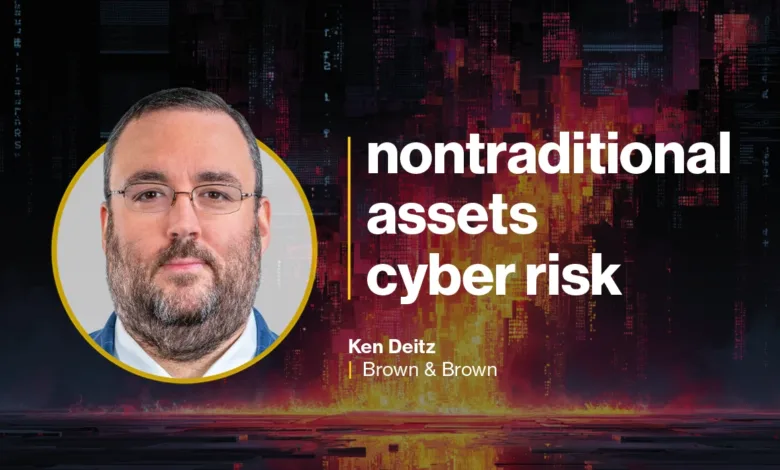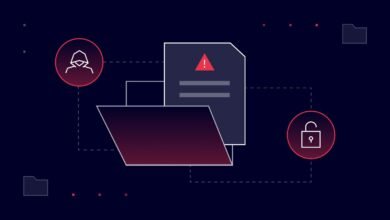The Hidden Dangers of a Connected World

▼ Summary
– Cyber risk has expanded beyond IT to include IoT, OT, and supply chain ecosystems due to increased connectivity and business demands.
– Organizations should manage risk by gaining visibility, applying segmentation, and planning for resilient recovery with an “assume breach” mindset.
– Securing IoT involves maintaining an inventory, using least privilege, segmenting devices, and leveraging procurement controls like SBOMs and update commitments.
– Effective OT security requires involving operational leaders, passive monitoring, and securing remote access with MFA and session controls.
– Top priorities for CISOs include reducing blast radius, hardening control planes and supply chains, and preparing to recover safely through exercises and playbooks.
The scope of cybersecurity risk has dramatically widened, moving far beyond traditional information technology to now include operational technology (OT), Internet of Things (IoT) devices, and the entire supply chain ecosystem. As companies integrate these assets using cloud and networked systems, the potential attack surface and the number of critical dependencies have grown exponentially. Effectively managing this new reality requires a strategic focus on comprehensive visibility, strict network segmentation, and robust recovery planning.
The concept of “cyber risk” has fundamentally transformed. It was once synonymous with IT risk, but that narrow definition is obsolete. Today, the standard practice involves connecting a vast array of equipment, from security cameras and building access systems to climate controls and industrial sensors, to external networks. Business demands have effectively erased the lines separating IT, OT, and IoT, creating interconnected systems where data drives analytics, automation, and crucial business choices.
From a risk standpoint, the most notable shift is the concentration of dependencies. A single identity provider, software update service, remote management platform, or logistics supplier can now become a single point of failure affecting numerous systems. The fundamental unit of risk is no longer an individual device; it has shifted to the control plane, the cloud consoles and application programming interfaces (APIs) that govern thousands of endpoints and vital operational processes.
Securing IoT devices, especially with their long service lives and limited resources, presents a distinct challenge. A practical approach begins with knowing exactly what needs protection and rigorously applying the principle of least privilege. Organizations should operate with an “assume breach” mentality. Building a dynamic inventory using passive discovery tools and existing network logs is essential, and any unknown device should be considered a threat until verified. Network segmentation is critical; group devices by function and importance, ensuring that communication between different segments is blocked by default. For devices incapable of strong encryption or authentication, traffic should be routed through secure gateways that can enforce security policies and provide clear visibility.
Applying software patches is ideal, but when that’s not possible, virtual patching through intrusion prevention or web application firewalls offers a protective shield. Organizations should enforce strict egress filtering and DNS controls, eliminate all default passwords, and transition to unique secrets or certificates for every device. Establishing simple behavioral baselines for network activity helps detect anomalies without deploying resource-heavy agents. The procurement process itself must become a security control, requiring vendors to provide software bills of materials (SBOMs), commit to update schedules, and offer remote access models that are open to audit.
Securing operational technology environments without interrupting critical processes requires careful strategy. Any change to an OT system should be treated as a significant business change, involving plant managers, safety officers, and maintenance leaders in the decision-making process. All modifications must be tested in a development environment that accurately mirrors the production system whenever possible. Implement changes during scheduled maintenance windows with rollback plans prepared. Gain visibility into the OT network using passive, read-only monitoring tools that can map assets and traffic flows without needing direct access to programmable logic controllers.
Remote access for vendors should be strictly controlled, with all sessions brokered through multi-factor authenticated jump hosts that have time-limited approvals and session recording. Any unauthorized modems or unmanaged network tunnels must be identified and decommissioned. Maintaining validated system images, confirmed backups, and ready-to-deploy spare parts enables swift recovery through hardware replacement and system restoration.
When advising on top priorities for risk reduction across IoT, OT, and supply chains, the guidance differs for a corporate board versus a Chief Information Security Officer. For a board, the essential advice is straightforward: hire a CISO who possesses a deep understanding of business operations, the organization’s risk tolerance, and the ability to articulate a clear vision for a high-performing cybersecurity program.
For a CISO, the most critical priorities are:
- Minimize the blast radius. Identify the organization’s most critical processes and actively test the security controls surrounding them, including segmentation, identity management, and least privilege access.
- Measure success through concrete metrics like the percentage of assets cataloged, the extent of network segmentation achieved, the level of remote access protected by multi-factor authentication, and the speed at which a compromised network zone can be isolated.
- Looking ahead, predicting the future is impossible, but current trends point to several emerging risks. Adversaries are likely to continue bypassing individual devices to instead hijack cloud management consoles, steal API tokens, and compromise remote management platforms to cause disruption on an industrial scale.
The firmware supply chain represents another significant vulnerability. Many small devices run on third-party code that is difficult or impossible to patch, leading to more situations where the only viable fix is to replace the hardware entirely.Furthermore, machine identities, such as digital certificates and API tokens, will vastly outnumber human users. Managing the lifecycle and permissions of these non-human identities is becoming the new security perimeter.
From a threat perspective, we can expect a rise in ransomware attacks deliberately designed to cause physical disruption, thereby giving attackers greater leverage. The deployment of private 5G networks and smart facility technologies also introduces risk; if these systems are misconfigured, they could propagate threats more rapidly than any traditional local area network.
The only sustainable approach is to treat IoT, OT, and supply chain elements as integral, first-class components of enterprise risk management, not as special exceptions. This demands relentless asset inventory, merciless network segmentation, continuous verification of security controls, and regular recovery rehearsals involving the personnel responsible for keeping the business operational.
(Source: HelpNet Security)





